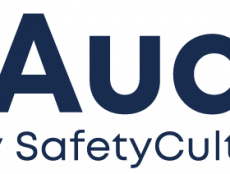
Articles
Editor’s Picks
Both Virtual and In-Person Courses Are Available for Learners in Henderson County N.C. This Fall
By Henry Kronk
August 31, 2018
Educators and administrators across the U.S. often find themselves conflicted on the topic of online high school courses. On the one hand, online courses stand as a way to help learners prepare for educational and professional opportunities. They’re also more flexible and, in many cases, more accessible. But on the other hand, virtual courses typically deliver poor results. The average virtual charter school student performs significantly worse than their brick-and-mortar peers. A district in North Carolina thinks they have a solution to this issue. Beginning this week, high schoolers in the Henderson County school system have been able to choose which format to learn in. Educators in the district have developed an in-house online curriculum for 16 different courses.
Enhanced Flexibility in Henderson County

For students, that means enhanced flexibility. Learners can enroll in a virtual class to avoid time conflicts, travel for sports, break up their schedule, or learn in an environment that better suits their needs.
“They’re not all going to log in at 9 a.m. in the morning and complete psychology,” said Matt Witt, who has developed an online version of his AP Psychology course, according to local station News 13 WLOS.
“They’ll have some flexibility within that schedule. As I’m pushing this activity out to students, I can offer it as a group activity where they’ll submit as a group. I can push it out as a discussion where they can interact with each other, and even create it as an individual assignment.”
The online classroom space is hosted by Google Classrooms. All said and done, it cost the district $75,000 to bring the courses online.
A Potential Solution to Poorly Performing Virtual Schools
Henderson administrators believe that this effort goes far beyond offering their students greater flexibility. One of the issues with online courses is a general lack of personal time between student and instructor. In some virtual institutions that fall more on the meat-grinder end of the spectrum, it isn’t rare to see a teacher-student ratio above 1:100.
In Henderson schools, however, learners will have the ability to get in touch with their instructors frequently and meet face to face if they desire.
“Children can take these classes virtually, but there’s also a teacher here in Henderson County that developed that program that will come in and spend some one-on-one time with that student, especially if they’re struggling,” Henderson County Schools Superintendent Bo Caldwell told News 13.
So far, 160 learners have signed up for a Henderson County Virtual Public School course. Administrators expect that number to rise before the end of the add/drop period.
Courses offered run the high school gamut from AP Spanish to Creative Writing to Creative Coding Through Games & Apps.
Henderson County is not the only district to offer learners the choice between traditional and virtual instruction. Also this fall semester, Garnet Valley High School in Pennsylvania will offer 11 courses in online, in-person and even blended formats.
Also a public school, they believe that investing in the online curriculum will eventually bring a return. Once their online offerings have been developed to a certain level, they will offer it to learners from other districts to the tune of $10,737.
Bringing courses online is generally easier for opt-in charter schools, which do not face the same oversight and constraints of public schools. Cost is always an issue in public districts.
It should be noted, however, that while Garnet Valley serves an exceptionally wealthy population (according to the 2010 census, average household income in Garnet Valley towns range from $70,236 to $121,389, well above the average in the U.S.), Henderson County is decidedly working class. The median household income in the North Carolina region was $43,013. No, not every district has the resources to develop an online curriculum, but where there’s a will, there’s a way.
Featured Image: NeONBRAND, Unsplash.









One Comment